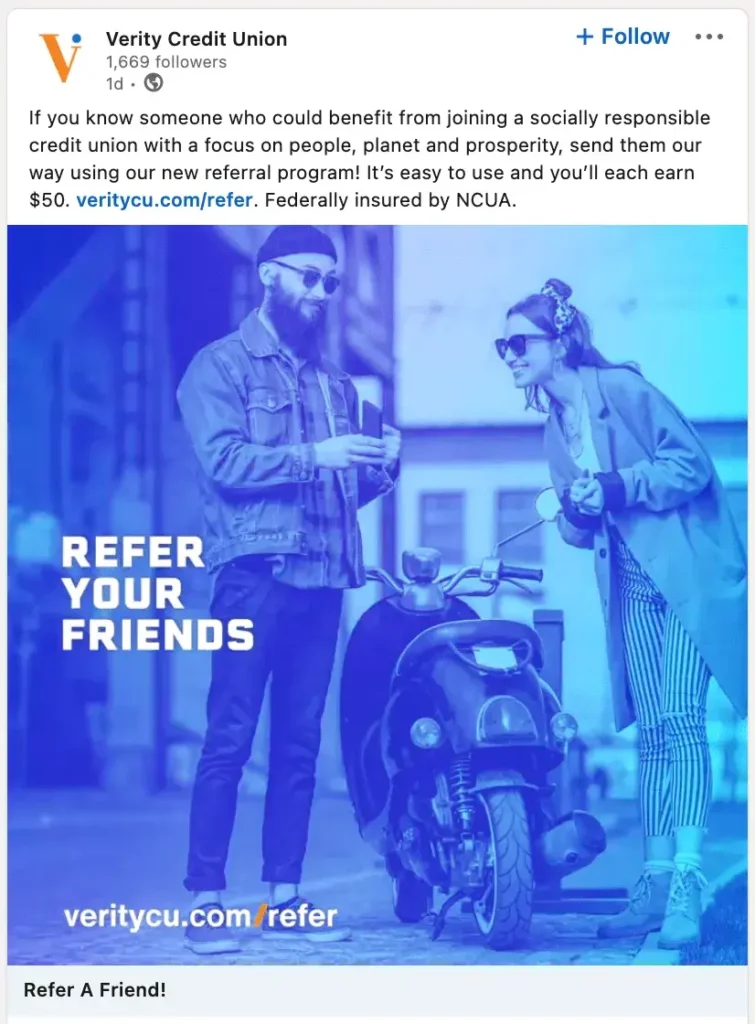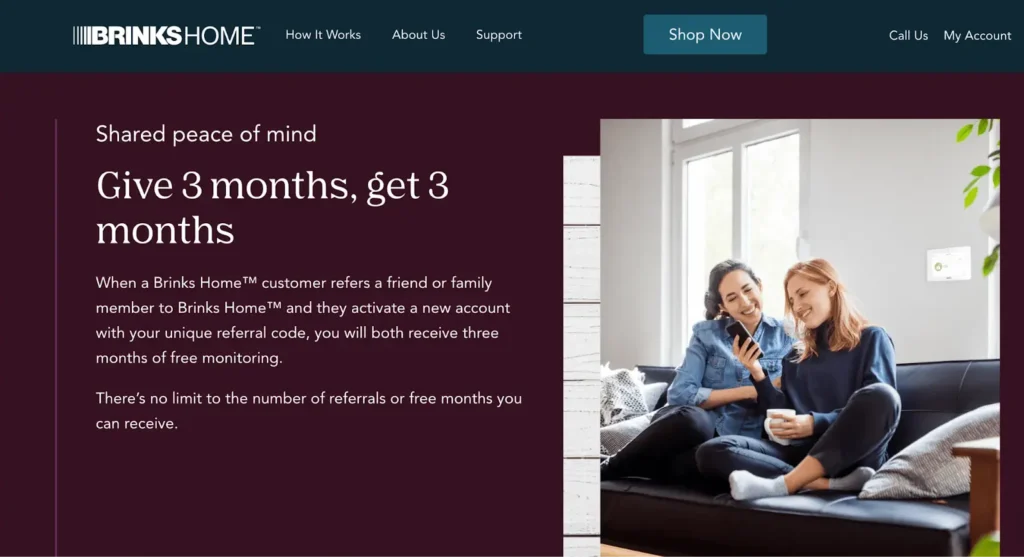It’s no secret that marketing teams face tighter budgets, increased competition, and accelerated innovation—meaning marketers consistently have to do more with less. But one growth channel stands out when it comes to gaining more customers without increased costs: a referral marketing program. This type of program, driven by the power of personal recommendations, is poised to generate up to 20 percent of new revenue annually for businesses.
And, as consumer behavior increasingly relies on recommendations from friends and family, brands have a unique opportunity to capitalize on this trend. In our State of Referral Marketing report, over 78 percent of consumer referral programs are double-sided, benefiting both the referrer and the referred.
Additionally, with 44 percent of programs rewarding users with store credit and 62 percent defining a purchase as a successful conversion, the potential for driving engagement and loyalty will make you do a double-take. Let’s take a closer look at the top 5 ways to promote your referral program for greater reach, engagement, and growth.
Enhancing visibility within your website or app
Your referral program needs to be highly visible within your website or app, so customers can easily access it and share special incentives with their community.
Strategic menu placement
One effective method is to prominently position referral program links within your navigation menu. Apps like Blink Health have seen increased participation by positioning their referral links in the main menu, ensuring users encounter them during regular app usage.

Blink Health positions the referral link on their customer login menu.
Persistent banners
Implementing persistent banners that highlight the referral program can significantly boost visibility. Place these banners on frequently visited screens or dashboards. For example, Flytographer uses a permanent banner on its booking confirmation page to remind users about their referral program after completing a purchase—when customer satisfaction is typically high.

Flytographer promotes their customer referral program in several ways through their site.
In-app notifications
Utilize in-app notifications to remind users of the referral program periodically. Trigger these notifications by specific user actions, such as completing a purchase or reaching a milestone within the app. Customizing the timing of these notifications ensures they reach users at moments of peak engagement.
Pop-up prompts
Smart pop-up prompts can also serve as effective reminders. When designed to appear at opportune moments, such as when a user logs in or completes an action, these prompts can capture attention without intruding. Ensure that the messaging is clear and includes a direct call to action.
Visual design enhancements
Employ visual design enhancements like contrasting colors and icons to make the referral program stand out. A well-designed icon or button that contrasts with the rest of the app’s color scheme can attract users’ attention more effectively. Doordash, for instance, uses bright, eye-catching graphics to draw users toward their referral program.

Doordash offers a referral program for Dashers, using an eye-catching page with sign-up links.
Steps to implement better visibility:
- Analyze User Flow: Identify your app’s most frequented screens and user touchpoints.
- Design Placement Strategy: Determine the optimal locations for referral program links, considering navigation ease and user behavior.
- Develop Visual Elements: Create visually appealing banners, buttons, and icons that align with your brand’s design but stand out within the app.
- Test and Iterate: Implement these elements in stages, testing user interaction and participation rates. Make data-driven adjustments to enhance efficacy.
Benefits:
- Increased Participation: Making your referral program easy to find and consistently visible can significantly increase user participation rates.
- Enhanced User Experience: Strategically placed and well-designed referral prompts can enhance the overall user experience, making it seamless and enjoyable.
- Higher Conversion Rates: Engaging users at the right moments with well-crafted prompts can increase the conversion rate of your referral program.
Maximizing email channels
Email remains one of the most tried-and-true ways to communicate with your customers. By strategically leveraging various types of emails, you can significantly enhance the visibility of your referral program.
Launch emails
When introducing your referral program, start with a dedicated launch email. This email should clearly explain the program’s benefits and how it works. Include a strong call to action (CTA) and make the process as straightforward as possible. For example, Brinks Home used a well-timed launch email to successfully drive initial interest and participation in their referral program.
Onboarding emails
Incorporate information about your referral program into your onboarding emails for new users. These emails typically have high open rates, and including details about the referral program early on helps set the stage for future engagement. Adzooma integrates referral program details in their welcome series, ensuring new users are immediately aware of the opportunity.
Transactional emails
Customers often highly anticipate transactional emails, such as order confirmations or shipping notifications. Use these emails to subtly promote your referral program. That’s why KOHO includes a section about its referral program in every transaction confirmation, keeping the program top-of-mind without intruding.

Koho’s referral program is promoted via email.
Newsletters
Regular newsletters provide an excellent platform to remind customers about your referral program. Highlight success stories, share testimonials, and offer tips on how to maximize referral rewards. Canva’s newsletters frequently feature user testimonials and tips, showcasing the program’s impact and encouraging participation.
Custom email signatures
Every email your team sends is an opportunity to promote your referral program. Including a brief mention and a link to the referral program in your email signatures ensures that every communication serves as a touchpoint. Newton leverages this tactic effectively by adding a referral link to all employee email signatures, driving consistent awareness.
Steps to implement different email callouts:
- Segment your audience: Tailor your email content according to customer segments to ensure relevance and engagement.
- Design compelling templates: Create visually appealing email templates highlighting key referral program information.
- Integrate clear CTAs: Ensure each email includes a clear call-to-action directing recipients to join the referral program.
- Track performance: Use analytics to measure the effectiveness of your email campaigns and adjust your strategy based on open rates, click-through rates, and conversions.
Benefits:
- Enhanced awareness: Consistently promoting your referral program across different types of emails increases overall awareness among your customer base.
- Improved engagement: Tailoring messages to specific customer journey stages boosts engagement and participation rates.
- Efficient use of existing channels: Leveraging existing email communication channels makes it easier to promote your referral program without additional costs.
Effective timing and contextual triggers
Leveraging effective timing and contextual triggers ensures that your promotions reach users at peak engagement and relevance moments.
Utilizing user satisfaction moments
One of the most opportune times to promote your referral program is when users are most satisfied with your service, such as right after purchase or upon reaching a milestone within the app. KOHO successfully uses this strategy by prompting users to share its referral link during account sign-ups and after achieving financial milestones.
In-app notifications
In-app notifications can be timely reminders for users to engage with your referral program. By setting these notifications to trigger based on specific actions—such as completing a purchase, finishing a task, or hitting a usage milestone—you ensure that the prompts are relevant and welcomed by users. For instance, Flytographer sends in-app notifications immediately after users book a photography session, capitalizing on the moment of high satisfaction.
Post-purchase prompts
After a successful transaction, customers are often more receptive to further engagement. Incorporating referral prompts into post-purchase communications, such as confirmation emails or thank-you pages, can drive higher referral rates. Newton integrates a referral section into their shipping confirmation emails, gently reminding customers about the benefits of referring friends.
User activity milestones
Celebrate user achievements and milestones with referral prompts. Recognize behaviors like reaching a certain number of uses, completing a profile, or engaging consistently over time. For example, Adzooma congratulates users on their advertising milestones and suggests sharing the success with friends via their referral program.

Adzooma offers milestone referral advertising.
Contextual call-to-actions
Ensure your (CTAs) are contextually relevant and seamlessly integrated into the user experience. A well-placed CTA that aligns with the user’s current activity can significantly boost engagement. Canva uses contextual CTAs effectively by suggesting users share referral links after they complete a design project, tying the CTA directly to the user’s recent positive experience.
Steps to implement contextual triggers:
- Identify key moments: Determine the critical points in the user journey where satisfaction and engagement are highest.
- Design personalized triggers: Create customized notifications and prompts that align with these key moments, ensuring they feel natural and unobtrusive.
- Test and refine: Continuously monitor the performance of these triggers, using analytics to fine-tune timing and messaging for optimal results.
Benefits:
- Increased relevance: Timing referral promotions to coincide with high-engagement moments makes them more relevant and likely to be acted upon.
- Enhanced user experience: By integrating referral prompts naturally into the user journey, customers perceive them as value-adding rather than intrusive.
- Higher conversion rates: Contextually relevant prompts increase referral program participation and conversion rates.
Social media promotion
Leveraging social media can significantly boost the visibility of your referral program. Each platform offers unique opportunities to engage with your audience and encourage participation.

Verity Credit Union referral program advertisements on social media.
Platform-specific strategies
Instagram:
Instagram is a visually-driven platform that promotes your referral program through engaging visuals and stories. Creating eye-catching posts, stories, and highlights around your referral program can drive awareness. For example, use Instagram Stories to demonstrate how easy it’s to refer friends, featuring real-life user testimonials.
Facebook:
Facebook allows for more in-depth content and community building. Use Facebook Groups and Pages to share detailed posts about your referral program, including step-by-step guides and success stories. Hosting live Q&A sessions or webinars about the benefits of your program can also foster community engagement and prompt immediate action.
LinkedIn:
LinkedIn is perfect for professional and B2B audiences. Share case studies and industry-specific examples demonstrating the success of your referral program. Publishing articles that delve into the measurable benefits businesses have experienced by joining your referral program can enhance credibility and interest.
X (Twitter):
X’s real-time nature makes it ideal for frequent updates and reminders about your referral program. Craft short, compelling messages with direct calls to action. Use Twitter polls or threads to engage users and spark conversations around your program. Highlighting user-generated content, such as tweets from satisfied customers, can serve as powerful endorsements.
Interactive elements
Incorporate interactive elements to make your social media promotions more engaging. Consider running contests where participants must refer friends to enter or offering exclusive rewards for referrals shared on social media. For instance, Canva frequently runs contests encouraging users to showcase its designs and refer others, driving engagement and referrals.

Canva offers interactive ways for customers to refer friends.
Leveraging influencers
Partnering with influencers can expand your reach and add credibility to your referral program. Collaborate with influencers who align with your brand values to create authentic content that promotes your program. These partnerships can include sponsored posts, story takeovers, or even dedicated blog posts highlighting the referral program’s benefits.
Statistics and data
Data can be a compelling tool to persuade your audience. Sharing statistics about the success rates of your referral program, such as average referral rewards earned by users or growth metrics, can add an objective layer of credibility. For example, citing that “companies using our referral program see a 30 percent increase in customer acquisition” proves its effectiveness.
Steps to implement social media strategies:
- Develop a content calendar: Plan your social media posts to ensure consistent and varied promotion of your referral program across all platforms.
- Create tailored content: Design content specifically suited for each social media platform, respecting their unique formats and audience behaviors.
- Monitor and engage: Track engagement metrics and adjust your strategy accordingly. Respond to comments and messages to foster a sense of community and trust.
Benefits:
- Broader reach: Utilizing multiple social media platforms increases your referral program’s exposure.
- Enhanced engagement: Interactive elements and tailored content keep users engaged and more likely to participate in your referral program.
- Credible promotion: Influencer partnerships and data-backed posts enhance the credibility and attractiveness of your referral program.
Public explainer page
Creating a dedicated explainer page for your referral program is essential for providing clear, comprehensive information to your users. A well-crafted page informs and persuades visitors to participate by highlighting the benefits and ease of use.

Brinks Home offers a dedicated explainer page for their customer referral program.
Clear and concise overview
Start with a straightforward overview explaining your referral program’s core concept. Ensure this section answers essential questions: What is the referral program? How does it work? What are the rewards? For instance, Brinks offers a brief introduction that immediately clarifies the purpose and mechanics of its referral program.
Step-by-step guide
A detailed step-by-step guide can demystify the process and encourage participation. Break down each step in referring a friend, from signing up to receiving rewards. Use bullet points or numbered lists to enhance readability. Newton effectively utilizes this approach by providing clear instructions coupled with illustrative screenshots.
Benefit-driven language
Highlight the tangible benefits for participants. Focus on how users can earn rewards, save money, or gain exclusive service access. For example, Adzooma emphasizes financial incentives, noting the specific monetary gains users can expect from successful referrals.
Visual aids
Incorporate visual aids such as infographics, flowcharts, and videos to make the information more engaging and easier to understand. Visual elements can break up text and provide a quick, at-a-glance understanding of the program. KOHO uses a mix of graphics and short video explainers to capture attention and simplify complex information.
Testimonials and success stories
Including testimonials from satisfied customers can add credibility and persuade potential participants. User-generated content, such as quotes and short stories about successful referrals, can illustrate real-world benefits. Canva features user testimonials on its explainer page, showcasing how the referral program has positively impacted users.
SEO optimization
Optimize the explainer page for search engines to drive organic traffic. Use relevant keywords throughout the content, including in headings, subheadings, and meta descriptions. This will help potential users find your referral program when searching online. Additionally, ensure the page loads quickly and is mobile-friendly, as these factors influence search rankings.
Linking strategies
Ensure the explainer page is easily accessible from various touchpoints within your app and website. Include links in emails, social media posts, in-app notifications, and user dashboards. For example, Newton integrates referral program links in transactional emails and account settings, consistently driving traffic to the explainer page.
Steps to implementing an explainer page:
- Draft the content: Write clear, concise, and engaging content covering all referral program aspects.
- Design visual elements: Create infographics, diagrams, and videos to complement the text.
- Optimize for SEO: Use relevant keywords and ensure technical SEO best practices are followed.
- Promote across channels: To maximize visibility, link to the explainer page from various user touchpoints.
Benefits:
- Comprehensive information: A dedicated explainer page provides all necessary details in one place, reducing confusion and barriers to participation.
- Enhanced credibility: Testimonials and visual aids add authenticity and help convince potential users of the program’s value.
- Increased traffic and engagement: SEO optimization and strategic linking ensure that more users discover and engage with your referral program.
FAQs
A referral marketing strategy involves encouraging and incentivizing existing customers to refer new customers to your business. This approach leverages natural word-of-mouth recommendations’ trust and credibility, turning satisfied customers into brand advocates.
Attracting customer referrals requires a well-thought-out approach highlighting the ease and benefits of participating in your referral program. Here are key strategies:
-
- Deliver exceptional customer experiences: Satisfied customers are more likely to refer others. Ensure your product or service exceeds expectations.
-
- Offer appealing rewards: Use incentives that resonate with your audience. The report shows that 44 percent of programs reward with store credit, which is highly popular.
-
- Simplify the referral process: Make it easy for customers to share referral links through various channels, such as social media, email, and in-app prompts.
-
- Promote at peak satisfaction moments: Trigger referral prompts right after a purchase or milestone achievement when customers are most satisfied.
-
- Use testimonials: Showcase success stories and positive feedback from current participants to highlight the benefits and ease of the program.
Promoting a referral program effectively involves multiple channels and strategic timing to maximize visibility and engagement. Here are some best practices:
-
- In-app promotions: Utilize prominent placements within your app, like banners and pop-ups, to remind users about the referral program.
-
- Email marketing: Send targeted emails during key moments, such as post-purchase, to encourage referrals. Personalized emails can greatly enhance engagement.
-
- Social media campaigns: Utilize platform-specific strategies to reach different audience segments. For example, use Instagram Stories for visual demonstrations and Twitter for real-time updates.
-
- Explainer page: Create a dedicated, SEO-optimized explainer page detailing the referral program, using clear, concise language and visual aids to enhance understanding.
-
- Contextual triggers: Implement referral prompts based on user activity and milestones, ensuring they are timely and relevant.
Visibility and strategy determine the success of your referral program
The success of your referral program depends significantly on its visibility and the strategic use of various promotion channels. Enhancing in-app visibility, leveraging multiple email channels, timing contextual triggers effectively, utilizing social media platforms, and creating an informative explainer page can drive higher participation and engagement.
Remember, a well-promoted referral program can turn satisfied customers into enthusiastic advocates for your brand. This, in turn, can lead to sustainable growth and a stronger, more engaged community around your products and services.




